Genre: Puzzle Developer: Scap Trust Publisher: Sunsoft Players: 1 Released: 1991
A friend of mine found Sh Kin Joh while dragging random ROMs in an emulator, around spring 2009, and said that he had literally spent the whole day playing it. I thought it might be interesting to try, since he dislikes most of the Genesis’ game library and this seemed to be one of the very few exceptions (The other notable one being Micro Machines II/’96). If you don’t master the Japanese language, don’t worry. Although the game is entirely in Japanese (it was only released in Japan and was Mega Modem compatible), it is easy to figure out. If not, feel free to have this document by your side while playing the game.
Shi Kin Joh (“SHIKINJOU” is the ROM’s internal name) is a game developed by Sunsoft in 1991. It is a puzzle game, in which you face a playfield divided in evenly sized rectangles, consisting of a layout of stones taken from the traditional Mahjong set. Bearing similarity to Mahjong, your goal is, by cleverly bringing stones of the same kind together, to reach the exit of the level, and this has to be accomplished in classic “Soko-Ban” manners. This might sound easy, but the developers came up with a lot of traps and little (positively) annoying bits here and there to stop you from doing so, actually making you think your way through gradually more and more complex getting layouts.
You play by moving stones. This is done very easily: just push them to the direction you want them to go. To do this, knowledge of the available stones is mandatory. Standard stones are movable and can – which is the objective – be brought together in pairs, making them disappear. This way, you free exits, mandatory routes or other stones needed to progress. Block stones are your worst enemies. They are not movable, and if a standard stone makes contact, it is transformed to a block stone of the type it touched. Watch out, as that can lead to you accidentally blocking important passages or otherwise hindering yourself from completing the level! By the way, in some of the later levels there are hidden fields that kill you when you run on them.
The gameplay is fantastic and never gets boring at all. It constantly keeps you thinking about how you could solve all the different obstacles preventing you from getting to the exit, and if you get stuck it drives you crazy up until the point where one part of your mind wants to quit, while the other one wants to furiously continue trying to solve the puzzle. And that takes a long time. The game consists of 192 levels. That’s right, to fully play through this game you have to break your brain through almost two hundred different levels. And if you still haven’t gotten enough, there is a special mode with ten additional extra hard levels and own rules, making them almost impossible to play without save-states or Game Genie codes.
One important factor is the well thought out process of playing the game. If you made a small mistake, the B button allows you to revert it. If you made a huge mistake, and need to restart, don’t worry. While there is a password system, it thankfully only has the one justifiable purpose there is for a password system – continuing when you shut off the system. If you need to restart, you bring up the menu by pushing the A button and selecting the first item using the C button. The second menu item, by the way, allows you to select a level to play. Naturally, it only allows to select up to the highest level you are playing.
Musically, you will be pleasantly surprised, if you like FM synthesis like I do. The soundtrack features a mixture consisting of a little cliché Chinese style and very nice synthesizer-based music. There are five motives. Each motive features an unique set of graphics (stones, background, etc.) and an own music track. If you get tired of one, simply choose another one. Motives are chosen in-game by using the A button to bring up the menu, and then choosing the third menu item and selecting a style.
The graphics are a bit simplistic. While it is “just” a puzzle game, a few more colors wouldn’t have hurt the game at all. The animation is fluent, the sprites drawn with love. It is a fun game to look at, but it feels a bit empty.
And now to probably the feature that rounds the game to an almost perfect puzzle game: A level editor. That’s right. You can build ten levels just how you want and show them to friends to let them bust their brains in their desperate attempts at solving them! The levels are saved on SRAM apparently, and once you’re finished you save the level. Also nice: While editing you’re granted in-game switch to the other custom-level slots without losing your data.
In conclusion, Shi Kin Joh is clearly an overlooked game (perhaps simply because it was only available in Japan). The game is rare, and if you’re very lucky you might be able to find a copy of it available for sale on a popular online marketplace. The Mega Modem features are no longer functional, but you won’t miss that at all. If you have a few hours or a day or two to kill, whether you use a cartridge or emulator, feel free to try this obscure game that has a brilliant gameplay idea coupled with beefing extra features and offers just the right mixture to fully enjoy the game. I highly recommend it!
SCORE: 9 out of 10


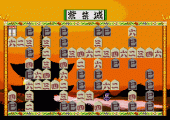
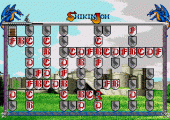
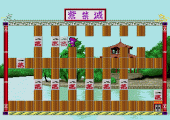
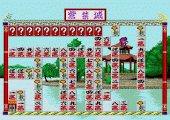
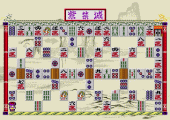
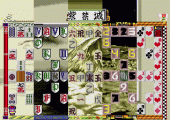
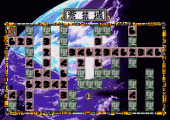
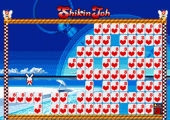
Recent Comments